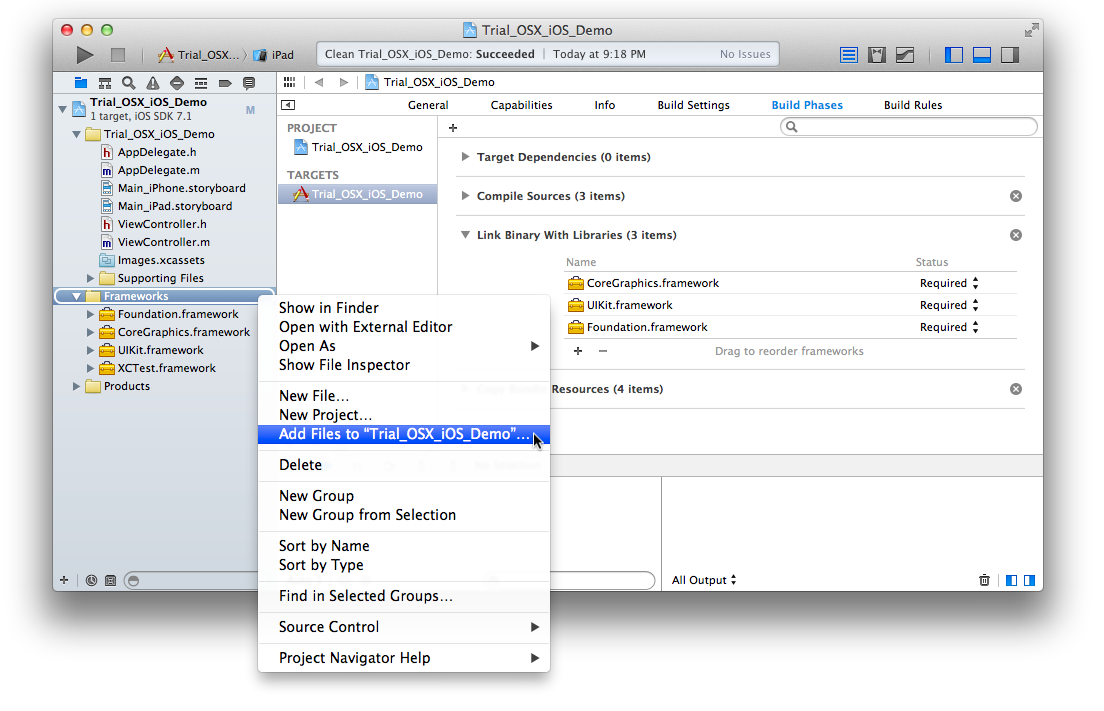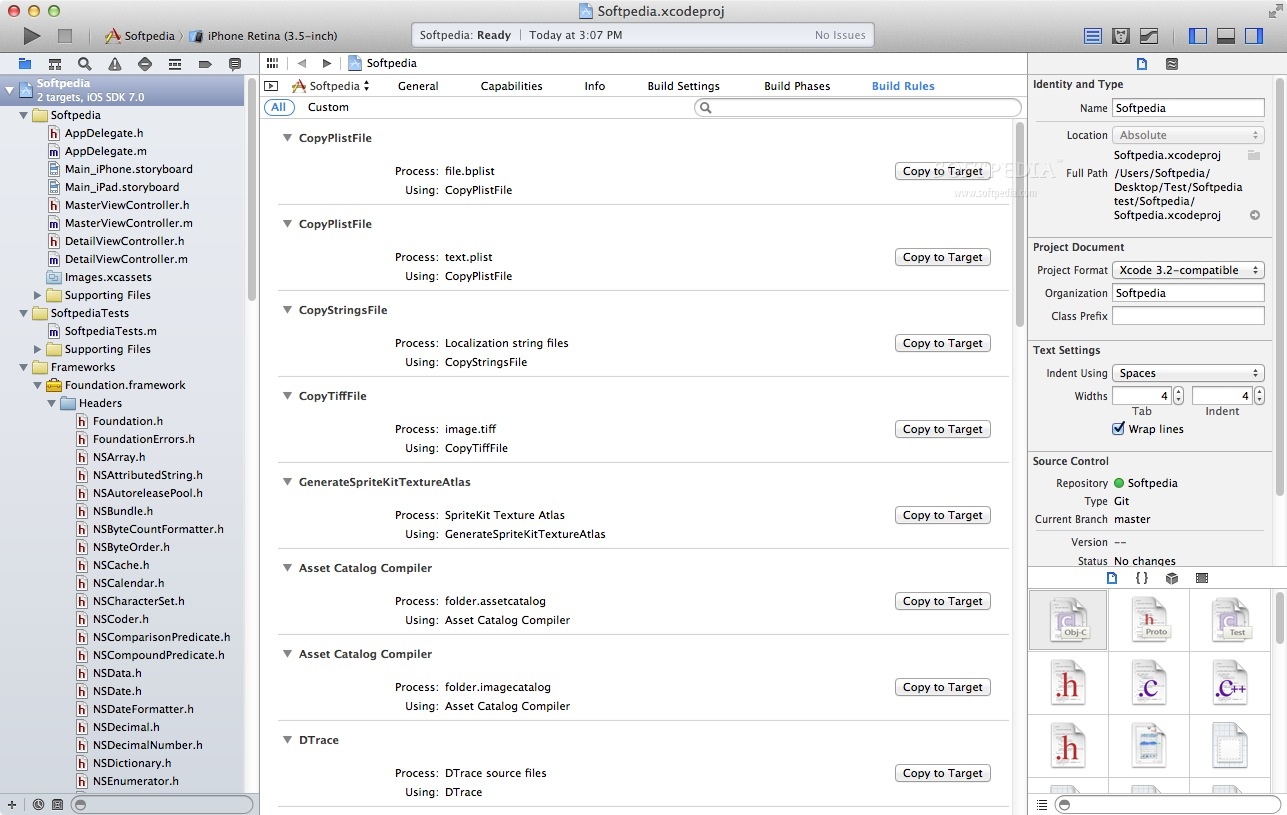2020. 1. 30. 20:34ㆍ카테고리 없음




Successfully clean installed Sierra. All working except Xcode menu items are grayed out as shown below. All other programs and apps work fine. Am running Nvidia Web drivers on two monitors using display port connections on a GTX 950 2GB card. When I take the card out and connect a monitor to the on. Lastly, the archive name that Xcode shows in the organizer isn't important for anything (AFAIK). You can rename the app bundle after you export it (if you're distributing outside the App Stores) or it's published in the App Stores under the name you've set up in iTunes Connect.
Before submitting an application to the App Store or share it with others, you create an application archive. You can then share your application archive with application testers and other application developers or distribute it to users. To have the application considered for inclusion on the App store, you submit the archive to iTunes Connect. To ensure your application archive passes essential iTunes Connect validation tests, you can have Xcode validate it before you submit it. Archive Your Application Before archiving your application, ensure that the binary is self contained. That is, if it relies on static libraries, ensure that those libraries are part of the application binary by setting the Skip Install build setting to Yes in the Release build configuration of the target that builds and archives the application. Archive your product for submission to iTunes Connect or for sharing with others.
Schemes have an Archive action with settings you use to customize the archive that Xcode creates when you choose Product Archive. An archive is a bundle that includes your product along with symbol information. You can build an archive to seed an application for testing or to validate and submit an application to iTunes Connect. Your new archive appears in the Archives list in the Organizer window, unless you turn off this option. Each archive is identified in the archives organizer with the date and time it was created.
For more information, see the related article on the archives organizer. Share Your iOS Application with Others You can share you iOS application with others through iTunes (for example, to send it to application testers) or Xcode (for example, to sent it to other members of your development team). Before you can share your application, you must archive it, as described in Share your iOS application with testers or other members or your development team.
Specifying the archive sharing options:. To share the application through iTunes, choose iOS App Store Package, and choose the identity to use to sign the archive. The recipient can import the archive into iTunes to install the application on her device. To share the archive through Xcode, choose Archive. Xcode saves the archive as an Xcode archive (with the.xcarchive extension) file package. The recipient can import the archive into the archives organizer.
When using enterprise distribution, Xcode saves an enterprise-distribution manifest (as a property-list files) alongside the shared archive. Share Your Mac OS X Application with Others You can share your Mac OS X application archive with others using installation packages, application bundles, or Xcode archives (for example, to share it with other members of your development team). Before you can share your application, you must archive it, as described in Share your Mac OS X application with testers or other members or your development team. Specifying the archive sharing options:. To share the application as a Mac OS X installation package, choose Mac OS X App Store Package, and choose the identity to use to sign the archive.
The recipient can install the application by opening the installation package. To share the application as a bundle, choose Application.
Xcode On Pc
The recipient can launch the application from the Finder. To share the archive through Xcode, choose Archive. Xcode saves the archive as an Xcode archive (.xcarchive) file package. The recipient can import the archive into the archives organizer. Validate Your Application and Submit It to the App Store When you’re ready to publish your application to users on the App Store, you need to enter information about it in iTunes Connect. You should also validate your application on your computer to ensure it passes essential iTunes Connect validation tests.
Before you can validate your application or submit it to the App Store, you must archive it, as described in Before validating your application or submitting it to iTunes Connect:. Ensure an application record for the application exists in iTunes Connect. The information in this record must match the application you want to validate or submit to the App Store. These are the main matching criteria:. Application Name.
Xcode Archive Mac App
Bundle ID. Version. Ensure the application record status in iTunes Connect is at least Waiting for Upload. For more information about iTunes Connect, visit.
Submit your application to iTunes Connect for publication on the App Store. Before submitting your application for publication, you should validate it to ensure that it passes standard iTunes Connect checks. In the archives organizer, select the application archive, and click Validate or Submit. Enter your iTunes Connect credentials, and click Next. Choose the application to share and the appropriate signing identity, and click Next. Review validation issues found, if any, and click Finish.
Troubleshooting: If Xcode doesn’t find an iTunes Connect application record for your application, the “No suitable application records were found” dialog appears. This dialog also appears when the application record state is not at least Waiting for Upload. Ensure an application record exists for your application in iTunes Connect. Ensure the application record status is at least Waiting to Upload.
